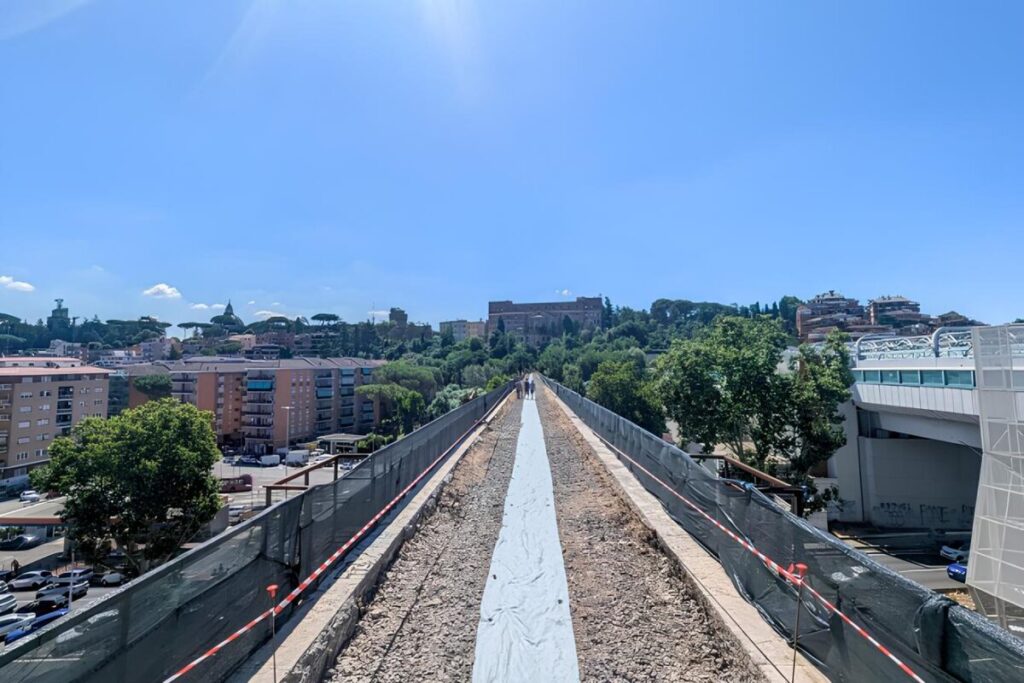Sustainable mobility in Italy still faces significant challenges. In the 14 metropolitan cities, there is an average of only 1.5 km of bike lanes for every 10,000 inhabitants, according to the Urban Mobility Observatory of the Kyoto Club. To reach the level of a city like Helsinki, which has about 20 km for every 10,000 inhabitants, an additional 16,000 km of bike lanes would be needed by 2030! And at least 3.2 billion euros in investments ... to bridge (somewhat) this gap.
Mobility # 2
According to the 2024 report “Urban Ecosystems” by Legambiente, an Italian environmental association, in Italian metropolises like Naples, Messina, Genoa, and Rome, the use and development of bike lanes remain insufficient. Nevertheless, Rome has moved from 89th place out of 106 last year to 65th this year. With a net improvement of 24 positions, it has surpassed important northern Italian metropolises like Verona and Turin in the rankings.
A large cycling ring
The Grande raccordo anulare (Great cycling ring), or GRAB, is a major project for mobility in Rome: a 50 km ring that connects the center to the peripheral areas of the city. It will pass by iconic monuments and archaeological sites such as the Colosseum, the Appian Way, and the Castel Sant'Angelo. The project, which began in July 2024, is expected to be completed in 2026. It is funded by the Ministry of Infrastructure and Transport and integrates into the public transport system as it will connect seven metro stations and three train stations.
The Urban Ecosystems report reveals a growing interest among Italian citizens in sustainable mobility, thus, they are increasingly favoring the use of bicycles. Mirko Laurenti, head of the Urban Ecosystems report and a member of the scientific board of Legambiente, tempers this, stating: “Many Italians still prefer the car even for short trips. But encouraging changes are underway, especially thanks to the growth of electric mobility and bike and scooter sharing services.” Statistics indeed show that in 2024, nearly 7 out of 10 Italians own at least one bicycle or electric scooter. The use of micromobility has already had a significant environmental impact: in Rome, over 500,000 car trips have been avoided, and in Milan, more than one million, with a reduction in CO₂ emissions of over 4,000 tons in total.

Recycled urban areas into bike and pedestrian paths
To encourage bike usage, there are not only large-scale projects like the GRAB. Rome is also investing in smaller, yet essential developments to meet the local needs of citizens. One example is the new bike and pedestrian path at Monte Ciocci, located between the San Pietro and Valle Aurelia stations, to the West: a fascinating urban recycling project that includes a 1,100-meter path utilizing a disused railway bridge.
The new bike and pedestrian path is also a stage of the via Francigena (a pilgrimage route connecting Canterbury to Rome). Along the promenade, there are playgrounds for children, benches, fountains, trash bins, etc. “Here, between the houses, the train to Pisa used to pass. When it was buried, a bike and pedestrian path was planned, emphasizes Rome's mobility deputy, Eugenio Patanè. This will be an urban link for young people going to school, from one neighborhood to another, on foot or by bike.” A good example of how to connect neighborhoods and areas of the city, not only by public transport but also by two wheels.

Photo of the Day: Nearly 7 out of 10 Italians own at least one bicycle or electric scooter @Diocesi Roma
